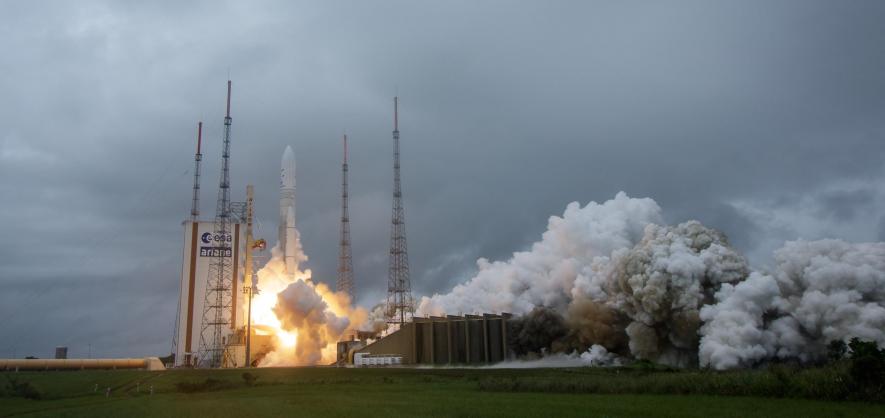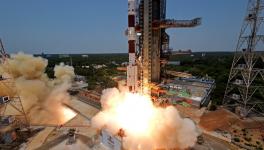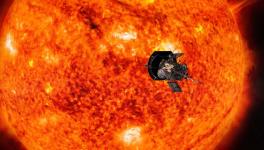China Launches Space Observatory to Study Solar Events

Image Source: Wikimedia Commons, used for representation only.
New Delhi: In yet another milestone achieved by China in space science, its first dedicated space observatory has been successfully launched on the 9th of October. The primary objective of the mission, according to Chinese scientists is to closely observe events happening in the Sun. Experts believe that it is an initiation of a field of world-leading probes.
The Advanced Space-Based Solar Observatory, the ASO-S was lifted off from the Jiuquan Satellite Launch Centre situated in Inner Mongolia, reports say. It had already entered the orbit and its solar panels were unfurled. The observatory is also having a nickname, Kuafu-1, which represents a giant in Chinese mythology who wished to capture and tame the Sun.
The observatory weighing 888 kilograms is aimed to observe the two most violent activities on the Sun from a distance of 720 kilometres from Earth's surface. The violent solar activities referred to here are the solar flares and the coronal mass ejection, the mission also aims to study the magnetic field that drives these events. Notably, these violent solar events trigger hazardous environments in space that can disrupt satellite services and power grids on Earth. The Chinese solar mission aims to understand the links between the phenomena.
Solar flares are the intense eruption of electromagnetic radiation in the atmosphere of the Sun. A solar flare can occur when magnetic energy built up in the solar environment got suddenly released. Solar flares are massive bursts of light. Solar flares are often accompanied by coronal mass ejection. The Coronal Mass Ejection (CME) is a massive release of plasma (the fourth fundamental state of matter after the solid, liquid and gaseous states) and magnetic field from the corona of the Sun. The outermost layer of the Sun’s atmosphere is its Corona which is made up of plasma. The CME signifies the emission of billions of tons of coronal materials.
The ASO-S or the Kuafu 1 observatory took over a decade to complete, according to Gan Weiqun, the chief scientist of the mission. This latest endeavour is like crossing a milestone by Chinese scientists, because before that researchers were restricted to only ground observatories. These include a solar telescope (35 centimetres) situated in the suburbs of Beijing and another one (1 meter) in Yunnan. These are able to reveal only a partial picture of the Sun because a portion of the solar emissions is absorbed by Earth’s atmosphere.
Notably, the Kuafu 1 mission started back in 2012 under the lead of Gan Weiqun and by then, reportedly, there were about 70 solar missions already in place around the world. In fact, China had plans to build such a solar observatory since the 1970s.
The turbulent solar events in the form of solar flares and the CMEs are expected to peak by the year 2025. Now, the Chinese observatory will join the Parker Solar Probe of the National Aeronautics and Space Administration (NASA), USA, as well as the European Space Agency (ESA)’s Solar Orbiter. These observatories are already in orbit around the Earth and the Sun.
The Chinese observatory has three main instruments on board. The first is a magnetograph, which is purposed for studying the magnetic field of the Sun. the second is an X-ray imager which will detect the high energy radiations emanating from the solar flares and the third one is a coronagraph, designed to monitor the outer atmosphere or the corona of the Sun. The mission scientists expect that these instruments will function in unison to produce high-quality observations. Zhu Cheng, the chief engineer of the observatory said that the ASO-S platform is also the world's first solar telescope in space that can simultaneously monitor solar flares and coronal mass ejections.
Get the latest reports & analysis with people's perspective on Protests, movements & deep analytical videos, discussions of the current affairs in your Telegram app. Subscribe to NewsClick's Telegram channel & get Real-Time updates on stories, as they get published on our website.
















